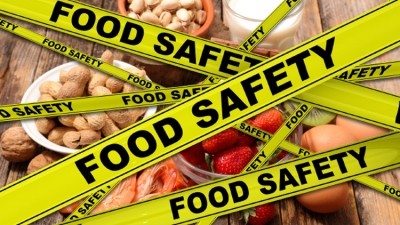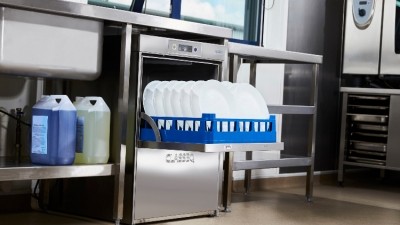10 ways to fail a food hygiene inspection

In this article, High Speed Training and principal environmental health officer for Hull City Council Paul Turner sets out 10 ways to fail a food hygiene inspection – so you know how to avoid the pitfalls.
“The majority of unsatisfactory visits are the result of a lack of confidence in the management,” said Turner.
“A crucial element of this criteria is reflected by paperwork, including correctly documented evidence of compliance, evidence that management decisions have been justified and evidence that attempts have been made to resolve crises where necessary.”
Having a system in place to document every aspect of the kitchen’s function will also help operators to deliver a high standard of hygiene, which “includes food handling practices and premises upkeep”, he said.
“All three elements of the rating criteria are interdependent and, ultimately, are key to creating a good food safety culture, for which the whole kitchen brigade has a responsibility.”
Here are the top 10 symptoms of failure:
1) Don’t bother registering the business
When taking over an existing food business or setting up a new one, it is fundamental to register the establishment with the area’s local authority at least 28 days before opening.
Once registered, the business will automatically be put forward for inspection by an environmental health officer (EHO).
The sooner this is completed, the more confidence is given to management – which is one of the three criteria needed to achieve a good score.
Also, make sure you don’t receive any press coverage prior to opening, as this implies that the establishment has been trading before the relevant registration procedures have been completed.
2) Don’t request an advice visit
In several localities, advice visits from EHOs are offered for free. Business owners should, therefore, make full use of this service by requesting an EHO visits the premises informally, prior to an official inspection, to provide feedback on the current operating standards.
This will then enable the management to gauge an idea of what is currently operating well or where further attention might be necessary.
3) Don’t keep accurate training records
EHOs need to see that staff have relevant food hygiene knowledge and awareness to have confidence that they are serving the public in a safe manner.
It is therefore vital staff can demonstrate an application of this knowledge to a variety of different situations, and training is one way to show evidence of this application of knowledge.
4) Leave rubbish for ‘the landlord to sort’
Under the Environmental Protection Act 1990 & Environmental Protection Act (Duty of Care) Regulations 1991, business owners have a duty of care to store, transport and dispose of waste without causing harm to the environment.
Always keep bins clearly labelled so food can be kept separate where necessary and educate staff on where they can access the regulations concerning food and catering waste.
Demonstrating this to a visiting EHO shows that the business is following procedures.
5) Key facilities still due to arrive? Open anyway!
In a busy working environment, things are likely to break or not go to plan. Rather than continuing to make-do without correctly functioning facilities, it would be better – as a responsible manager – to document this in the food safety management system, including the steps that have been taken towards restoration.
Stating what procedures were carried out to improve the issue, such as phoning an emergency plumber, arranging an emergency rubbish pick-up or covering staff sickness, can reassure an EHO that they can still have confidence in the management team.
6) Wait for the manager to carry out safety checks
A food premises should be set up so that all staff can carry out the necessary food safety checks. If, on inspection day, these haven’t been done due to absences, it does not bode well for the ‘confidence in management’ criteria of the rating.
7) Rush to provide the latest food trend
EHOs regularly see restaurants, takeaway outlets and various other eateries immediately jumping on the latest food trend, with no experience in how to execute it safely.
While adding variety to a menu may help to develop your business, be prepared to show evidence that those within the business have the right knowledge, training and safety adherences for using alternative cooking methods.
8) Ignore the EHO’s suggestions
There are two strands to improving an unsatisfactory rating: legal requirements and further recommendations.
Failing to implement the legal requirements can result in cautions and formal notices.
Similarly, ignoring any best practice suggestions or tips means the confidence in management will plunge.
9) Impress with a fake five-star rating
Even if an owner has taken over a food business, they cannot continue to display the previous hygiene rating.
Instead, the local authority will provide an ‘awaiting inspection sticker’ that can be used before a new inspection has been scheduled.
10) Maintain poor hygiene levels
Food handlers should take pride in adhering to high hygiene standards, which includes washing hands at regular intervals and wearing gloves when appropriate to avoid cross-contamination.
To maintain the positive hygiene level, eatery owners should make sure employees have access to clean, hot water and have soap dispensing facilities at all wash stations.







